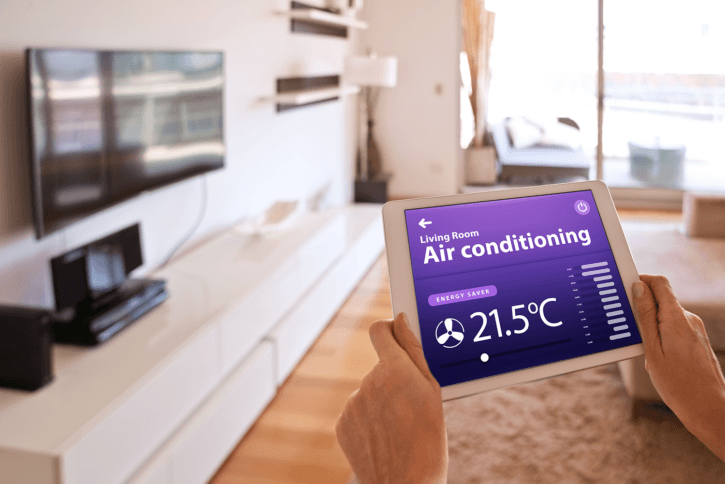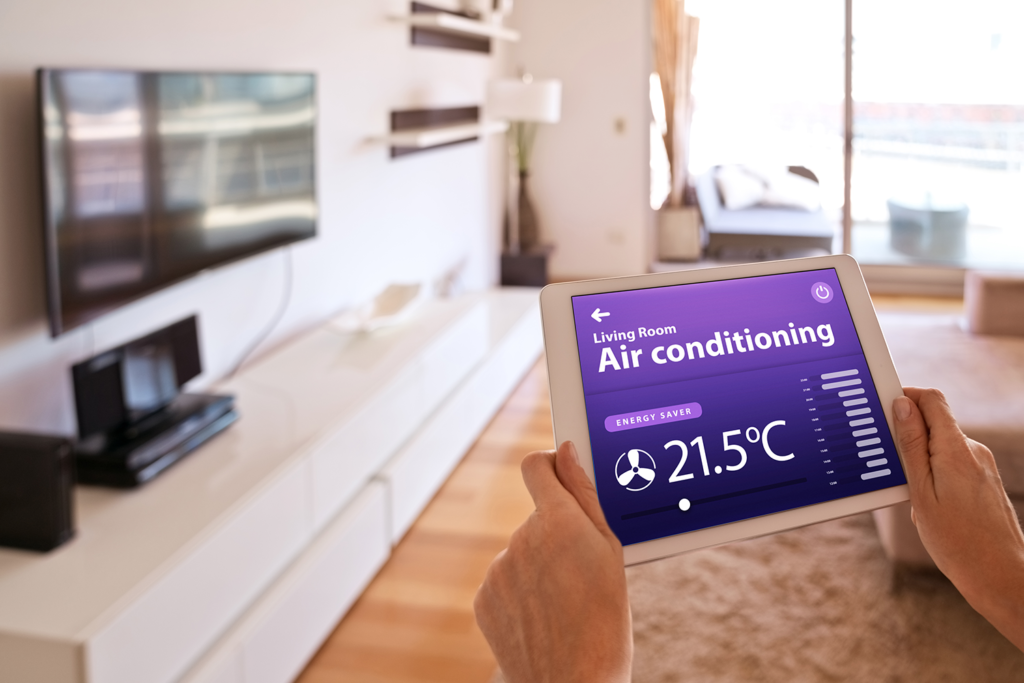HSPF Ratings: What You Need to Know

There are a lot of acronyms used by the HVAC (heating, ventilation, and air conditioning) industry. One of the key acronyms used is HSPF. But what is HSPF? HSPF stands for Heating Seasonal Performance Factor. It is a measurement that indicates the energy efficiency of your air-source heat pump when in heating mode. One with a higher rating will be more efficient and could lead to lower electricity bills.

What is an HSPF Rating?
The HSPF (Heating Seasonal Performance Factor) is a rating of the energy efficiency for all heating devices, including heat pumps, furnaces and water heaters. HSPF provides a numerical representation of the total heat delivered by the device during normal usage divided by the amount of electricity it takes to deliver that heat.
It tells us how much heat, in BTUs (British Thermal Unit), is delivered per kilowatt-hour (kWh). The higher the HSPF rating, the more efficient the device will be.
For example, a heat pump with a rating of 9 will deliver 9 BTUs in 1 kWh, while one with a rating of 10 will deliver 10 BTUs in 1 kWh. The HSPF rating will be shown on the yellow EnergyStar label that appears on every system. Currently, the label shows a bar graph between 8.2 and 13.5.
What is a good HSPF rating?
In determining what is a good HSPF rating, the U.S. Department of Energy has helped by setting minimum requirements. In 1992, when the federal government first set the standards, the minimum HSPF rating allowed was 6.8. In 2006, the energy department raised the standard to 7.7.
In 2015, the government raised the minimum once again to its current rating of 8.2. However, the U.S. Department of Energy has already determined that in 2023 the minimum required rating for HSPF will be 8.8.
This means that anyone shopping for a heat pump, furnace or water heater should look for a system with a rating of at least 8.2. To keep up with the new standards, a system with a rating of 8.8 would be better.
If energy efficiency is driving your purchase, opt for a device with an HSPF rating of 9.0 or higher. You’ll reduce your carbon footprint and potentially save more money on monthly energy bills.
Why raise the HSPF standards?
Heat pumps with a higher HSPF rating are a good investment that can lead to significant monthly savings on your energy bill and more precise humidity and temperature control.
Heat pumps come in both single package and split system units. The heating and cooling for a package unit are housed together in a single device that is located outside.
A split system has two components: the compressor in the outside unit and the air handler in the interior unit. The Federal Energy Management Program has set different minimum requirements for each type.
Currently, the single package heat pump has a minimum HSPF rating of 8.2, while the split system has a minimum mark of 8.5. A heat pump that meets these minimums could result in an annual savings of more than $1,200 when compared to a heat pump with a lower rating.
Using an HSPF savings calculator
While a heating device with a higher HSPF rating will be more energy efficient, it will typically cost more to purchase than one with a lower rating. So how do you decide whether to go with the energy efficient device or the lower priced one? You can take advantage of an HSPF calculator to determine the lifetime cost of using each device.
With an HSPF savings calculator, you can determine your average energy cost each year to come up with the approximate annual savings generated by the more efficient device. Consider the HSPF rating chart below:
| 8.2 HSPF | 7.7 HSPF | Savings | |
|---|---|---|---|
| Annual energy cost | $1,386 | $1,770 | $384 |
| Annual energy consumption (kWh) | 11,453 | 14,624 | 3,171 |
| Purchase price | $6,700 | $5,700 | -$1,000 |
| Lifetime energy cost | $13,006 | $16,607 | $3,601 |
| Lifetime energy consumption | 137,437 | 175,493 | 38,056 |
| Total cost | $19,706 | $22,307 | $2,601 |
The above example uses an electric rate of $0.121 per kWh and a lifetime usage of just over nine years. Despite spending an extra $1,000 to purchase the more energy efficient unit that has a HSPF of 8.2, over the course of the device’s lifetime, you could end up saving more than $2,600. It would only take 2.6 years to earn back the extra $1,000 spent through the annual savings achieved by the more energy efficient model.
How to convert HSPF to COP
Another industry acronym, COP, stands for coefficient of performance. It is another way to measure the efficiency of a heating device. COP is the ratio of the heat that is output compared to the amount of energy needed to deliver that heat. If a heat pump has a COP of 2.4, then the system delivers 2.4 times as much energy as it consumes. As with HSPF, the higher the COP rating, the more efficient the heating device will be.
Some devices have an HSPF rating, while others have a COP rating. In order to compare the two devices, you need to know how to convert HSPF to COP. This can easily be done by multiplying the HSPF number by 0.293. So, a heat pump with an HSPF of 8.2 will be equal to a COP of 2.493 (8.2 x 0.293). If you’re comparing that device to one that has a COP of 2.93, the second device with the 2.93 COP rating will be more energy efficient.
In general, whether shopping for a heat pump, furnace or water heater with an HSPF or COP rating, the higher the rating, the more energy efficient the device will be and the more savings you could achieve.